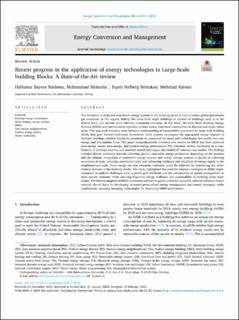| dc.description.abstract | The transition to clean and sustainable energy systems in the building sector is vital to reduce global greenhouse
gas emissions. In this regard, shifting the focus from single buildings to clusters of buildings, such as at the
district level, can provide more effective sustainable solutions. In this study, the term Multi Building Energy
Systems (MBES) was introduced to represent various scales, from local communities to districts and larger urban
areas. This approach reflects a more inclusive understanding of sustainability potentials for large-scale building
blocks that goes beyond traditional boundaries. Such systems encompass the aggregated energy impacts of
multiple buildings whether physically proximate or connected via smart grid technologies that enable two-way
energy and information flows. This paper comprehensively reviewed case studies on MBES that have achieved
zero-energy, nearly-zero-energy, and positive-energy performance. The literature review, facilitated by a com-
bination of database searches and snowball search techniques, has yielded 67 relevant case studies. The findings
revealed diverse pathways towards achieving optimal renewable energy production depending on the location
and the climate. Integration of renewable energy sources and energy storage systems is pivotal in achieving
economies of scale, reducing operational costs, and enhancing resilience and reliability of energy supply at the
neighbourhood scale. Total energy use and emissions reduction could be achieved by considering the archi-
tectural features of the building stocks. The study highlighted the need for adaptive strategies in MBES imple-
mentation to address challenges such as power grid overloads and the complexities of spatial arrangement, to
meet current demands, while ensuring long-term energy resilience and sustainability in evolving urban land-
scapes. The limited adoption of MBES simulation software suggests a need for accessible tailored software. Future
research should focus on developing advanced personalised energy management and control strategies, while
continuously assessing emerging technologies for improving MBES performance. | en_US |

